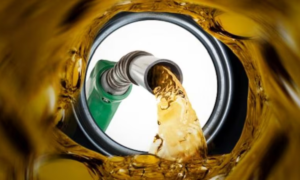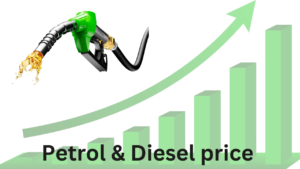Petrol prices in India are on the rise in recent weeks, reaching Rs 100 a liter in certain cities. While the global surge in fuel prices explains part of this phenomenon, the intricate web of taxes and a strategic moratorium on fuel price adjustments during election months also plays a pivotal role.
Why Petrol Price is High in India?
The Tax Quagmire
Taxes constitute a significant chunk of the retail selling price of gasoline in India. Currently, taxes account for a staggering 58% of the retail selling price of petrol and approximately 52% for diesel. In simple terms, if the price of petrol is Rs 100 per liter, a substantial Rs 58 goes towards various taxes. The Union government imposes excise duty and a cess, while states levy a value-added tax (VAT).
International Oil Prices vs. Municipal Taxes
India heavily relies on oil imports, and the surge in international oil prices over the past six months has added to the burden. However, municipal taxes, especially excise duties and VAT, exacerbate the situation. The government’s excise charge, approximately Rs 32-33, combined with state VAT, forms the bulk of these taxes.
An Historical Angle
We look into the past in order to comprehend the seriousness of the current circumstance. The last significant hike in fuel prices in India occurred between 2010-11 and 2013-14, under the United Progressive Alliance (UPA) government. However, back then, the surge was primarily driven by a global spike in crude oil prices, reaching unprecedented highs. Interestingly, despite these soaring global costs, the retail price of petrol in Indian cities remained below Rs 90 per liter, owing to lower tax levels.
Reluctance to Cut Rates
Despite the current economic challenges and escalating worldwide costs, both the central government and states have been hesitant to reduce tax rates on fuel. These taxes are an essential source of income. In the past six months, blame-shifting on fuel tax reductions has been a common tactic, with neither party willing to make the first move. The government’s excise duty collections skyrocketed to Rs 3.89 lakh crore in 2020-21, a significant 62% increase from the previous fiscal year, with a substantial portion attributed to petrol taxes and cess.
Impact on Revenue and Discretionary Spending
The reluctance to cut rates is rooted in the substantial revenue generated through these taxes. In the fiscal year 2020-21, despite a 9% decrease in petroleum usage due to Covid-19-related transportation restrictions, excise duty collections soared. This increase can be attributed to a significant hike in petroleum product taxes in May 2020. India’s fuel inflation increased to 11.6% in May from 7.9% in April and 4.5% in March, which sparked worries about the detrimental effects of fuel inflation on discretionary expenditure as people rearranged their spending to account for the growing cost of fuel.
Regional Disparities
The impact of soaring petrol prices is not uniform across the country. Seven states and union territories, namely Rajasthan, Madhya Pradesh, Maharashtra, Andhra Pradesh, Telangana, Ladakh, and Karnataka, have witnessed petrol prices surpassing Rs 100 per liter. Mumbai, on May 29, became the first metropolis to hit this milestone, closely followed by Bhopal on May 12, marking the first state capital to do so. As of June 17, petrol cost Rs 102.88 in Mumbai and Rs 104.91 in Bhopal.
The complicated interaction of rising global oil costs, local levies, and government resistance to rate reductions is responsible for the spike in gas prices in India. The complex tax system, which heavily relies on VAT and excise taxes, is what drives the continuous increase in gas costs, even if the global market also plays a part.Given the significant revenue these taxes provide, especially in light of the current economic circumstances, the government’s reluctance to lower them is warranted. Politicians and people as a whole must both grasp this complicated position.


